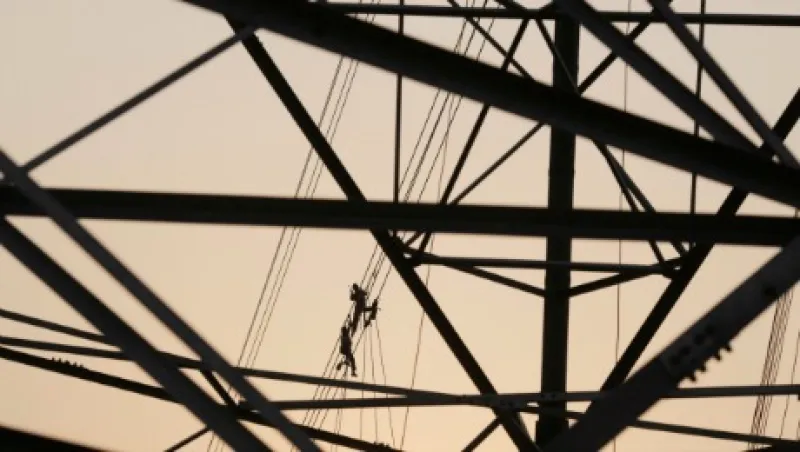We are living in a complex world of rapidly diminishing resources, worsening environmental conditions and widening gaps between rich and poor, not to mention rapidly declining global security. Within a mere decade the economic game has changed and we have entered a new era that calls for new institutions.
The International Monetary Fund, World Bank and World Trade Organization have had their time. Two of these institutions — the IMF and the World Bank — were established as part of the Bretton Woods system after World War II. Their mandate was to ensure economic stability to prevent the kind of global financial crisis that had given rise to that catastrophic war. But since the 1970s the very policies of market fundamentalism adhered to by these two institutions have been partly responsible for the 2008 financial crisis and the ensuing deterioration of political, economic and social stability worldwide.
Accusations by developing and underdeveloped nations that the World Bank, IMF and WTO are constructing a postcolonial order have called into question our existing global financial system and the institutions that govern it. Rather than lobbying for a new Bretton Woods, the developed “developing” nations, headed by China and followed by India and Russia, are leading through action. Three institutions — the Asian Infrastructure Investment Bank (AIIB), the New Development Bank BRICS and the Silk Road Fund, all formally established in 2015 — represent a new financial architecture that has the potential to rapidly displace the old. China is the master designer of this new arrangement.
It all began on March 20, 2012, when leaders of the BRICS nations (Brazil, Russia, India, China and South Africa) meeting in India issued the Delhi Declaration, calling for a new financial architecture. At the outset this document criticized distortions in the global economy caused by the quantitative easing stimulus of the Federal Reserve (begun during the Bush administration but continued throughout the Obama administration): “The build-up of sovereign debt and concerns over medium to long-term fiscal adjustment in advanced countries are creating an uncertain environment for global growth. Further, excessive liquidity from the aggressive policy actions taken by central banks to stabilize their domestic economies has been spilling over into emerging market economies, fostering excessive volatility in capital flows and commodity prices.”
The Delhi Declaration asserted that an alternative financial architecture is necessary to parallel the old one — that would, in short, democratize our global financial system: “We therefore call for a more representative international financial architecture, with an increase in the voice and representation of developing countries and the establishment and improvement of a just international monetary system that can serve the interests of all countries and support the development of emerging and developing economies.”
The emergence of new institutions represents a clear challenge to the preeminent position of the World Bank and IMF. For years the policies of both lenders have been characterized by the attachment of political conditions to their low-interest loans, a practice detested by developing countries and viewed as neocolonial. As a fresh alternative, these new financial institutions may be expected to offer nonconditional loans but at higher rates — a more businesslike approach. They may also fund projects in industries that the World Bank does not, such as biofuels and nuclear power plants. In light of climate disruption and new carbon reduction targets, these are new priorities.
Having stepped out from poverty into prosperity, China, India and other newly emerged economies believe that they have the answer to their own challenges. They bring new, diversified values and perspectives with their capital. They are also adopting fusion economics (mixing planning and market) rather than adhering to Washington Consensus policies of market fundamentalism. They are stepping away from the straitjacket of monolithic globalization (which envisions capital markets as the source of wealth generation), instead pioneering new mixtures of diversified localization. Different economic approaches offer newfound pragmatism that continues to evolve, without regard to any particular ideology. As a result, the very political alliances long accepted as status quo will change with this shift, heralding a new, global consensus.
The old economic assumptions and financial architecture of our post–Bretton Woods order already are in the process of being replaced. The fast-growing economies of the global South come from a different philosophical tradition than that of the Group of Eight. For them, sustainability is nothing new; rather, it is a way of life. The reality of scarcity in their societies does not allow theory to override common sense. These nations have pulled themselves out of poverty. They have no time for theory. Ask yourself, how could an IMF consultant advise an underdeveloped nation’s government on village economics if that consultant has never spent a night in a village?
The values of these new emerging economic powers have strong traditional roots in a complex matrix of cultures spanning many millennia in a totally different cultural context from that of either Washington or Brussels. Their values are more community and collectively oriented. While, obviously, greed exists and is sometimes flaunted perversely, it is not recognized as the only factor that motivates people and guides markets, calling for blind financial sector deregulation. Moreover, capital markets in and of themselves are not the end driver of wealth or healthy economics.
Instead, investment into infrastructure and finance for real businesses is viewed as essential in ensuring sustainable communities. Globalization needs to be balanced by a sense of family, identity and ethnicity — equally important motivations in people’s lives. Therefore certain community protections are recognized as necessary to ensure stability. And the role of government, working together alongside the free market as combined forces in tandem, represents a more pragmatic and realistic approach to address the challenges we all face today.
Certainly, a new consensus seems to have emerged that decisions affecting our planet can no longer be made from a narrow street in New York and a wide boulevard in Washington. These decisions must be made by the nations and people affected by them. And that is what this new financial architecture is really all about.
Laurence Brahm is an international lawyer, mediator and economist; and has served as senior adviser to China’s Ministry of Environmental Protection.
Get more on regulation.





